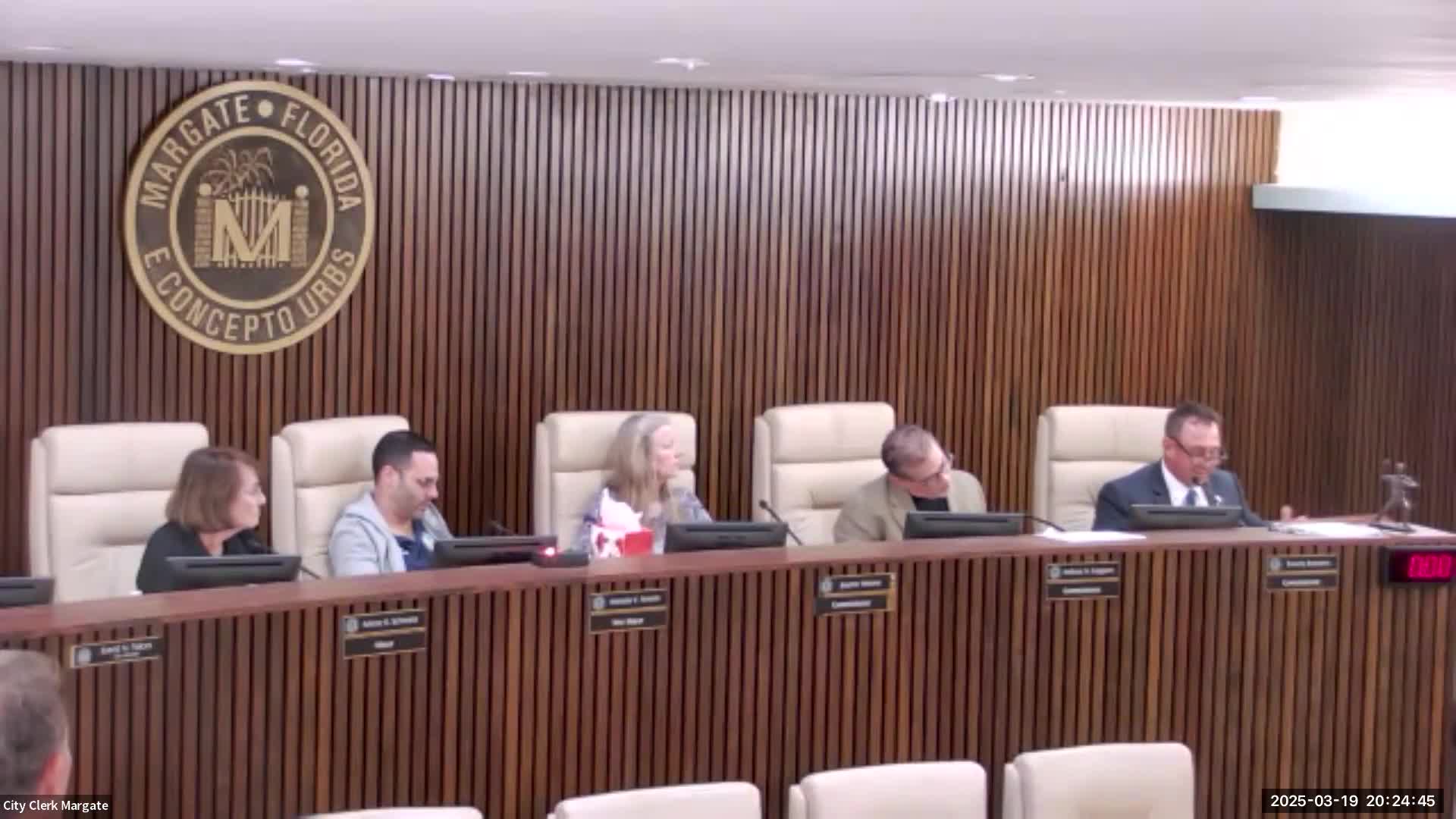Margate debates photo enforcement cameras amid concerns over safety and revenue
March 20, 2025 | Margate, Broward County, Florida
This article was created by AI summarizing key points discussed. AI makes mistakes, so for full details and context, please refer to the video of the full meeting. Please report any errors so we can fix them. Report an error »

Concerns over proposed speed camera ordinances dominated the Margate City Commission meeting on March 19, 2025, as residents and officials debated the implications for public safety and revenue generation. The discussion was sparked by claims from neighboring Hollywood that their speeding incidents had dropped by 91% since implementing similar measures, prompting skepticism from some commissioners and residents about the validity of such statistics.
Commissioner Tommy Rosano voiced strong opposition to the ordinance, labeling it a "money grab" and questioning the effectiveness of cameras in teaching responsible driving. He argued that the focus should be on increasing police presence in school zones rather than relying on automated systems. "If we had the cameras also, you had to put out a public notice about 180 days before so people would know," he stated, emphasizing the need for community awareness.
Resident Dave Albright echoed these sentiments, suggesting that traditional traffic enforcement by officers would be more effective than cameras, which he claimed do not address the root causes of speeding. He highlighted the importance of visible police presence to deter reckless driving, particularly in school zones.
The meeting also featured input from Hassan Devaja, a representative from Genoptic, a manufacturer of photo enforcement technology. He acknowledged the perception of speed cameras as revenue-driven but insisted that his company prioritizes community safety. Devaja noted that while some companies may focus on profit, Genoptic aims to make a positive impact.
As the debate continued, residents expressed mixed feelings about the proposed ordinance. Some argued that the revenue generated from tickets could fund additional police officers, while others remained skeptical about the fairness of penalizing drivers without clear accountability for who was operating the vehicle at the time of the infraction.
The commission plans to revisit the ordinance for a second reading on April 2, 2025, allowing for further public input and discussion. The outcome remains uncertain as the community grapples with balancing safety and the potential financial implications of speed enforcement technology.
Commissioner Tommy Rosano voiced strong opposition to the ordinance, labeling it a "money grab" and questioning the effectiveness of cameras in teaching responsible driving. He argued that the focus should be on increasing police presence in school zones rather than relying on automated systems. "If we had the cameras also, you had to put out a public notice about 180 days before so people would know," he stated, emphasizing the need for community awareness.
Resident Dave Albright echoed these sentiments, suggesting that traditional traffic enforcement by officers would be more effective than cameras, which he claimed do not address the root causes of speeding. He highlighted the importance of visible police presence to deter reckless driving, particularly in school zones.
The meeting also featured input from Hassan Devaja, a representative from Genoptic, a manufacturer of photo enforcement technology. He acknowledged the perception of speed cameras as revenue-driven but insisted that his company prioritizes community safety. Devaja noted that while some companies may focus on profit, Genoptic aims to make a positive impact.
As the debate continued, residents expressed mixed feelings about the proposed ordinance. Some argued that the revenue generated from tickets could fund additional police officers, while others remained skeptical about the fairness of penalizing drivers without clear accountability for who was operating the vehicle at the time of the infraction.
The commission plans to revisit the ordinance for a second reading on April 2, 2025, allowing for further public input and discussion. The outcome remains uncertain as the community grapples with balancing safety and the potential financial implications of speed enforcement technology.
View full meeting
This article is based on a recent meeting—watch the full video and explore the complete transcript for deeper insights into the discussion.
View full meeting